Read the research summary for a popular audience below (small excerpt only) and then read the actual journal abstract. The abstract is MUCH more tentative, reflecting the uncertainty of the data.
The popular summary clearly implies, for instance, that glaciers worldwide are melting rapidly and that Icelandic glaciers are part of that. But the article simply says that global warming is likely to increase dust! A very different statement.
The summary also definitely states a link between dust and ice melting whereas the article says only that dust and melting "appear to be associated".
So the actual findings of the article in fact prove nothing about global warming or "rapidly retreating" glaciers
If you are capable of reading an academic journal article much fun awaits you, surprising though that may seem
A University of Miami (UM) Rosenstiel School of Marine and Atmospheric Science-led study shows a link between large dust storms on Iceland and glacial melting. The dust is both accelerating glacial melting and contributing important nutrients to the surrounding North Atlantic Ocean. The results provide new insights on the role of dust in climate change and high-latitude ocean ecosystems......
Due to increased air temperatures linked to global climate change, glaciers worldwide are rapidly retreating. The melting of glaciers, including those on Iceland, would also contribute to sea level rise.
More HERE
High-Latitude Dust Over the North Atlantic: Inputs from Icelandic Proglacial Dust Storms
Joseph M. Prospero1 et al.
Abstract
Mineral aerosols play an important role in the atmosphere-ocean climate system. Research has focused almost exclusively on sources in low-latitude arid regions, but here we show that there are substantial sources in cold, higher latitudes. A 6-year record of measurements made on Heimaey, an island south of Iceland, reveals frequent dust events with concentrations exceeding 20 micrograms per cubic meter. Much of this potentially iron-rich dust is transported southward and deposited in the North Atlantic. Emissions are highest in spring and spatially and temporally associated with active glacial outwash plains; large dust events appear to be associated with glacial outburst floods. In response to global warming, ice retreat on Iceland and in other glacierized areas is likely to increase dust emissions from these regions.
Science 2 March 2012: Vol. 335 no. 6072 pp. 1078-1082
Hey! Give us ALL some gravy, say grassroots Greenies
I don't know that they have it right about their movement failing. Their windmills worldwide are chopping up flying creatures by the millions and the greater use of paper bags and cardboard containers in lieu of the evil plastic bags and polystyrene containers is causing millions of trees to be cut down. What more do they want? Will Obama's proposed slaughter of barred owls appease them?
A searing new report says the environmental movement is not winning and lays the blame squarely on the failed policies of environmental funders. The movement hasn't won any "significant policy changes at the federal level in the United States since the 1980s" because funders have favored top-down elite strategies and have neglected to support a robust grassroots infrastructure. Environmental funders spent a whopping $10 billion between 2000 and 2009 but achieved relatively little because they failed to underwrite grassroots groups that are essential for any large-scale change, the report says. Released in late February by the National Committee for Responsive Philanthropy, Cultivating the Grassroots was written by Sarah Hansen, who served as executive director of the Environmental Grantmakers Association from 1998 to 2005.
Environmental funders mainly support large, professionalized environmental organizations instead of the scrappy community-based groups that are most heavily impacted by environmental harms. Organizations with annual budgets greater than $5 million make up only 2 percent of all environmental groups, yet receive more than half of all environmental grants and donations.
The report makes the simple but profound argument that the current environmental funding strategy is not working and that, without targeting philanthropy at communities most impacted by environmental harms, the movement will continue to fail. "Our funding strategy is misaligned with the great perils our planet and environment face," Hansen writes.
"Environmental activists and funders all share a gnawing sense that something has to change. No sensible environmental activist would argue that we, as a field, have done what is needed to respond to environmental degradation," Hansen said in an interview.
Instead of funding community-based groups to generate ideas, strategies and political support for transformative change, environmental donors have thrown their weight behind narrow lobbying campaigns in Washington, D.C. -- for example, the failed inside-the-beltway campaign in 2009-2010 to pass "cap and trade" legislation to curb global warming. For their part, mainstream environmental groups hang pleas for environmental change on the apolitical hook of rational appeals, expecting that decision-makers confronted with powerful evidence will do the right thing. But this strategy has not worked because "a vocal, organized, sustained grassroots base is vital to achieving sustained change," the report asserts.
More HERE
Data Tampering: GISS Caught Red-Handed Manipulating Data To Produce Arctic Climate History Revision
GISS and the GHCN are preoccupied with the Arctic, bestowing large “corrections” on the few and far northern stations. The raw data of the Arctic did not tell the story they wanted to hear, and so GISS took it upon themselves to rewrite it.
Let’s start with Figure 1 from Paul Homewood’s article How GISS has totally Corrupted Reykjavik’s Temperature, used by permission.
Figure 1: Corrupted Reykjavik’s temperature
In January of this year, Paul Homewood of Not A Lot of People Know That, wrote an article describing GHCN and GISS changes to the temperature data that resulted in early 20th century cooling in Reykjavik, Iceland. Because I had stored many annual temperature records for Arctic stations in preparing A Light In Siberia in September of 2010, this prompted an investigation into whether GHCN and GISS had pulled the same on other station data. The short answer…yes they had!
Last year in May, GHCN did a major revision of their historical temperature database. They changed the title of the database to GHCN-M version 3. GISS followed. They refer to the new data as GHCN_v3. The important thing to note is that GHCN_v3 already contains homogeneity “corrections” so there is in most cases now, no difference between
GISS “raw” data (after removing suspicious records), and “after GISS homogeneity adjustments.” As a result, we only get to see temperature data that has already been modified by the hand of man (or a computer under the direction of a man).
What has this done to temperatures? You get one guess.
Figure 2. This is a GHCN comparison of database version 2 and version 3. Land and Ocean Temperatures for January. Source: NOAA/GHCN here.
The chart is subtle in that the scale is chosen to hide the slope and amount of the change trend. But look closely. Note that the change trend is from cooler in the past to warmer in the present, even though the temperature trend is already in that direction. They just added another ~0.1°C to the century trend.
What did they do in the Arctic? Above the Arctic Circle, there are few weather stations.
Figure 3. This is the last ten years temperature trend. From GISS.
The red Arctic grids on the anomaly maps represent ten stations, most in Arctic Russia. It is a bit difficult to sort out specifically which stations these are. Eleven stations in or close to these locations were investigated. Many have quite large “corrections.” Ostrov Dixon is the red grid square on the left on the north coast of Russia. Barrow is the orange grid square at the top of Alaska. Figure 4 is the first example.
Figure 4. This is the temperature change and change amounts to the Ostrov Dixon (Dickson Island) station.
The mainstream climate scientists have always disliked the warming in the 1920’s, 30’s, and 40’s, and the cooling in the 1960’s and 70’s. At several locations in the Arctic they have sought to “correct” these years.
Figure 5. Ostrov Kotel (Kettle Island)
At Ostrov Kotel they simply warmed the whole series from just before 1950 to 1995 With obvious steps at each end of the change. At Barrow, (Figure 6) the change was a series of ramps. This makes little sense at Barrow. For all its history the measuring site has been at the airport. Barrow has a well-documented heat island, but the correction is in the wrong direction for that. Again, the correction takes away most of the 1960’s, 70’s, and 80’s cooling.
Figure 6. This is the temperature change at Barrow.
At most locations they were not so obvious. For 11 locations that seem to be the heart of the warm grids, here are the plots.
Figure 7. The GHCN/GISS corrections at 11 Arctic locations.
It is very difficult to see a pattern in Figure 7. Some stations have a wild pattern of corrections of several degrees. Some have just a few spikes here and there. Some have a definite pattern.
Figure 8. This is the average “correction” of all the stations in Figure 7 with a linear trend line.
Figure 8 shows the pattern: cooling of the distant past, and warming of the inconvenient 60’s and 70’s.
Figure 9 below shows the average anomaly for those 11 stations:
Figure 9. This is the average anomaly for the 11 stations before and after GHCN “corrections”, with trend lines.
In Figure 9, the “corrections” have doubled the warming trend from 0.7°C per century to 1.4°C per century. The pesky warming in the 20’s and 30’s, and the cooling of the 60’s and 70’s are now nearly on the same level, almost wiping out that inconvenient AMO cycle.
I had data from a dozen other Arctic and Northern Siberian stations from last year. Most of those had just a few minor changes. Here (Figure 10) is the average correction for all 23 stations. As one gets further from the extreme Arctic, the changes begin to average out. If all stations around the globe are included, the average becomes that slow warming “correction” seen in Figure 2.
Figure 10. This is the average of 23 Arctic stations.
GHCN seems preoccupied with the Arctic, bestowing large “corrections” on the few far northern stations. This is in line with the “climate scientists” belief system:
- The Arctic is warming faster than the rest of the globe.
- Ocean cycles have little effect on the climate.
- The present decade is the warmest.
- CO2 rules.
This confirmation bias gets reflected in every evaluation step when reviewing temperature records. The result is that each new data release further confirms what they look for. Can we trust the GHCN and GISS temperature data? You be the judge.
SOURCE
The Fictive World of Rajendra Pachauri
In 2005 the chair of the Intergovernmental Panel on Climate Change (IPCC), Rajendra Pachauri, flew to a Washington conference. He spent ninety minutes getting through the airport formalities. A chauffeur-driven car had been waiting outside, with the engine and air-conditioner running so that Pachauri would have a cool car to step into. Pachauri was indignant. “My God! Why did you do that?” he rebuked the driver. “You probably had the engine on for two hours. Was that really required?” He told North Carolina legislators three years later: “So that’s the kind of change in lifestyle that I’m talking about … which when put together will really make an enormous difference.” [1]
In January 2010 Pachauri was under fire for the howler in the 2007 IPCC report about melting Himalayan glaciers. The fracas inspired the London Mail OnLine to check out Pachauri’s lifestyle in Delhi.[2] It turned out that Pachauri ran a chauffeur-driven Corolla; a smoky Indian derivative of the Morris Oxford; and an eco-friendly G-Wiz electric car provided for his short urban trips. On January 29 Pachauri had his chauffeured Corolla collect him for the 1.6 kilometre drive from his home to the office. The chauffeur hung round (meanwhile being chatted up by the villainous Mail reporter) before driving Pachauri in the Corolla to lunch at an upmarket restaurant one kilometre from Pachauri’s home. The battery-powered G-Wiz stayed in the carpark. The next day Pachauri issued a statement urging the masses to use public transport......
Pachauri’s standing as chair has degraded in the past two years. Principally, there was the melting-glacier gaffe, and rapid exposure of other serious errors in the fourth Report. A chastened Pachauri in March 2010 had to call in the Inter-Academy Council (IAC), a world peak-of-peak science body, to report on necessary IPCC reforms. The IAC in August 2010 recommended in four places, but in vain, that IPCC chairs serve only one term: “A 12-year appointment (two terms) is too long for a field as dynamic and contested as climate change.”[32] Pachauri is in his second term to 2013, although senior IPCC members, including a German co-chair of a Working Group, have put him on notice to shape up.[33] The IPCC panel at Abu Dhabi last May (2011) agreed about the “one-term limit” but said it could make exceptions, and anyway the one-term limit would only apply post-2013. Other important IAC recommendations were also negated by the IPCC at Abu Dhabi.[34] At the following session in Kampala last November the IPCC adopted—after twenty-three years—its first conflict-of-interest policy, but exempted any conflicted authors for the fifth Assessment Report in 2014 because, as Pachauri put it, it wouldn’t be “fair” to the authors to include them retrospectively.[35]
In October 2011 the investigative journalist Donna Laframboise published her “Delinquent Teenager” expose of the IPCC’s reliance on grey-lit and its wholesale infiltration by Greenpeace-style activist authors. Other tidbits included documentation about graduate students and sub-PhDs mysteriously doubling as “world-leading” scientists to become IPCC authors, lead authors and even top-rung “co-ordinating lead authors”. She also revealed how quality-assurance rules supposedly binding on IPCC writers and reviewers were routinely flouted. Within weeks Professor Ross McKitrick, a prominent sceptic, issued his own documentation of why the IPCC should either shape up or be replaced by a non-political scientific body.[36]
Pachauri’s nadir was in January 2010 when he had to issue to the world the Himalayan-glacier correction. He failed to “man up”, with the statement coming not from the chair, but from the chair plus nearly a dozen vice-chairs and co-chairs.[37]
The gaffe about the Himalayan glaciers melting away by 2035 is far worse than Joe Public realises. Rather than traverse the universe of IPCC failings, for which Pachauri as chair is procedurally accountable, I’ll focus on just this Himalaya episode.
In late 2009, the Indian Ministry of Environment and Forests issued a sixty-page discussion paper by glacier expert Vijay Raina, who had a track record of forty years of glacier fieldwork and research. He concluded that the glaciers were not retreating abnormally, neither through global warming nor anything else. On November 9, 2009, New Delhi Television brought Pachauri on to its evening news to defend the IPCC report.[38]
Q: Are you questioning this report’s credibility completely?
Pachauri: I am questioning this evidence. They are totally wrong. This is one government report. The IPCC uses thousands of scientists and uses peer-reviewed literature … [Raina’s report] is, if I may say so, voodoo science, this is not science.
Q: The Minister says the IPCC report is “alarmist”.
Pachauri: I don’t think he has any business questioning a body that has established its credentials over the last 21 years, and whose reports are accepted by every government of the world including India.
Q: Are you willing to sit down with the Minister … ?
Pachauri: No, I will not sit down with the Minister ... If this report is all that solid, let them publish it, let it go through a peer review process … I question these [Raina’s] findings completely. They don’t make sense to me at all.
This was not just a Pachauri brain-snap. He gave the same message to print interviewers, deriding the Raina report as “divine intervention ... magical science … indefensible”.
In fact the IPCC’s Himalaya forecast was based on nothing more than speculation by an Indian scientist, Syed Hasnain, in an Indian eco-magazine in April 1999, recycled into the New Scientist and then into a report in 2005 by the activist group WWF. The grey-lit WWF report was then cited in the IPCC’s draft glacier chapter in 2007. (By February 2010 Pachauri was back-pedalling on his previous claims about use solely of peer-reviewed material, saying it was “perfectly valid” to use grey-lit provided the grey-lit was carefully scrutinised and authenticated, and caveats noted.[39] Incidentally, IPCC guidelines mandated that grey-lit be specifically flagged as such, but this requirement was ignored in all but six instances out of the 5587 IPCC grey-lit citations that Laframboise found, and the IPCC has since dropped the “flagging” rule.)
Six IPCC experts reviewed the draft chapter and none saw anything odd. Twelve reviewers looked at it again in second draft. One of them (from Hebron University) said caustically that two elements in the forecast contradicted each other. Another, (from Newcastle University in the UK) told the authors to look up certain contrary references that cited glacier expansion (the IPCC authors’ brief is to assess the full range of scientific views on a topic). The reviewers’ comments were ignored. None of the total eighteen reviewers found anything untoward about the lone WWF citation for the dramatic forecast.[40] The page even included a table showing the annual rate of retreat of nine well-studied glaciers. It took me one minute’s googling to calculate that one of the glaciers, Bara Shigri, is eleven kilometres long and would therefore take 305 years to disappear—that is, by 2317, not 2035. The Milam glacier drips its last in the year 3024.
The IPCC authors also got the area of Himalayan glaciers wrong (33,000 square kilometres, not 500,000!), and the number of glaciers wrong (9000 to 12,000, not 15,000). The Pindari glacier shown as having annual shrinkage of 135 metres is actually shrinking only by 25 metres a year [41]. A bright high-school student would have done a better job at checking these IPCC authors’ sensational claims.
Later, the second draft was taken up and run in the all-important Summary for Policy Makers. The draft summary was reviewed line-by-line by 190 government representatives (if the politicians’ changes clash with the science sections, the science sections are altered retrospectively). Only one commented, hitting the bullseye: “This is a very drastic conclusion. Should have a supporting reference otherwise should be deleted (Government of India).”[42]
Even then, IPCC rigour was not to be seen. The summary was watered down, leaving untouched the howlers in the source text. Thus the gold-standard fourth report of the IPCC was launched to the world. Looking at the chapter online today, the single page on the Himalayan glaciers, amounting to 497 words, has attracted not one but nine official errata.[43] (The reviewers obviously took special care not to be caught out again.) In a lifetime of journalism, I seldom made more than five errors per story. However, Glacier-gate has plenty more swings yet.
* A year after the 2007 report, Pachauri, wearing his TERI hat, recruited Syed Hasnain, the source of the 2035 nonsense, to run a new glacier team in TERI, where Hasnain is now a Professor and Distinguished Fellow.[44]
* In May 2009 TERI obtained a major share of a $3.9 million European Union grant for Himalayan glacier study, based on the IPCC’s prediction. In January 2010, after the melt hit the fan, the Eurocrats rationalised, in Yes, Minister mode: “Not all glaciers are about to disappear, but their recession is real.” Hence the project is studying a threat due to emerge several centuries hence.[45]
* Earlier, in September 2008, TERI as part of a small Iceland-based consortium called Global Centre, successfully won approval for a $500,000 grant from the Carnegie Foundation for glacier study. The 2035 forecast was dubbed a “humanitarian challenge”. The Foundation, perhaps smelling a rat, at some point “suspended” the handover of the cash. It claimed that the Global Centre had declined the cash because of Iceland’s “political and economic challenges”.[46]
* The debunking report by Raina, the glacier expert, was in November 2009. On January 15, 2010, the President of Iceland, Dr Olafur Grimsson, no less, announced via TERI that academics from Iceland, TERI and Ohio would use the Carnegie $500,000 to speed up study of glaciers, given the 2035 melt prediction. Pachauri (wearing his TERI hat, certainly not his Jane Austen bonnet) added helpfully: “It is universally acknowledged that glaciers are melting because of climate change.”[47]
* The Iceland announcement from TERI was a bare five days before Pachauri (IPCC hat) had to issue his public regrets over the 2035 gaffe. It is barely conceivable that on January 15, while shmoozing with the President of Iceland, Pachauri (TERI and IPCC hats) was unaware of the gathering storm over the gaffe. Had he not even checked the IPCC chapter after his stoush with Raina? And since Carnegie for sixteen months had failed, for whatever reason, to disgorge the promised $500,000, wasn’t Pachauri jumping the gun about deploying the money for scholarly exchanges?
* In December 2011 we had the arrival at the Durban IPCC meeting of three studies from the Nepal-based International Centre for Integrated Mountain Development (ICIMOD) asserting that Himalayan glaciers are retreating after all. [48] David Molden, director-general of ICIMOD, informs me that the new studies are “a peer-reviewed ICIMOD report” funded by the Swedish government, and that the findings will be submitted to journals.[49]
* Finally, the melting-glacier literature, for good or ill, seems a bit overblown. There are long-term data for at most twenty to thirty of the 10,000 Himalayan glaciers; swathes of the region, apart from being uncomfortable, are off-limits for military reasons; and in the whole of the Himalayas, there is only one automated temperature-recording station.[50]
Gaffes notwithstanding, Pachauri is too committed to his “cause” to step down. It’s worth asking, what precisely is this “cause”? In a 5000-word interview with Nature he said it was not the global warming threat but something more important.[51] “I am not going to rest easy until I have articulated in every possible forum the need to bring about major structural changes in economic growth and development. That’s the real issue. Climate change is just a part of it”. The “major structural changes” he wants involve transferring wealth from the West to developing countries—such as India—leading to a convergence of living standards. The West thereby pays for its past sins of emission. Climate Professor Fred Singer waspishly describes this as shifting money “from the poor in rich countries to the rich in poor ones”.[52]
The key instrument for the wealth transfer is the UN’s Kyoto-designed “Clean Development Mechanism” (CDM). Through this, the West pays to invest in low-emission ventures in the developing world, a process which is usually cheaper than the West cutting its own emissions. India is getting a big share of this investment, with 1400-plus carbon credit projects worth $33 billion approved or under way.[53] Pachauri’s TERI is heavily involved, directly and through TERI executives’ close links and roles with the Indian government’s strategic energy planning. Pachauri’s view is that India, the world’s fifth-biggest emitter, need not itself abate its emissions in its catch-up phase, but should aim merely for reduced carbon-intensity per unit of output.[54]
I began this profile with Pachauri’s address to the North Carolina legislators and will end with it. First, he wrongly thought he was “off the record”. Second, he clearly set out to scare the legislators witless, with such forecasts as a 90 per cent drop in African crop harvests by 2100, along with security and peace issues with Africans heading out of Africa literally for greener pastures. To avert such perils, including “several metres” of sea-level rise, he said that the world need only give up one year’s GDP growth (3 per cent) by 2030, or 5.5 per cent of world GDP if we rashly delayed the emission targets to 2050.
Pachauri climaxed his address with a quote (probably taken from Al Gore’s book Earth in Balance) by native American Chief Seattle in 1854: “Man did not weave the web of life, he is merely a strand in it. Whatever he does to the web, he does to himself.” My b.s. detector beeped and sure enough, Chief Seattle’s eco-poetry is, in polite academic-speak, “inauthentic … an evolving work of fiction”.[55]
More HERE
'Consensus' on Global Warming is a Manmade Concept
International panel selectively chooses scientists it knows will push a 'melting planet' agenda
With the ongoing media coverage of a well-known scientist lying to get confidential documents from the Heartland Institute regarding global warming, there's been consistent reporting in the media about the "scientific consensus" that climate change is manmade.
Numerous articles on blogs and news sites cite that scientific "consensus" of man-made global warming without citing any reference.
The phrase may be a reference to the body of work done over the years by the Intergovernmental Panel on Climate Change, which involves work done by thousands of scientists from more than 120 governments.
John Christy, director of the Earth System Science Center and a climatologist from the University of Alabama-Huntsville, says the IPCC's process does not promote a disparity of opinion on global warming and is more political than scientific. Christy says the problem is the degree of warming. He thinks 90 percent would agree that mankind has some impact on the climate. "But a lower percentage would say it was a dangerous impact. You really can't get a good answer to this," Christy said.
Christy has served as a "lead author" for a report done by the IPCC.
He said he believes a problem is that the scientists selected to be considered by the IPCC are nominated by governments that for the most part have a man-made global warming bias.
"The selection of lead authors through a two-step political process is a problem," Christy wrote. "Presently, national governments nominate to the IPCC those who over the years, they can generally count on to be consistent with national policy. From this pool, the IPCC itself selects those it wants to be lead authors."
Christy said he believes IPCC-selected authors have significant authority over what they accept and reject when determining a paper's conclusions, adding that lead authors are allowed to judge their own work against their critics. "This has led to biased information in the assessments and thus raises questions about a catastrophic view of climate change because the full range of evidence is not represented."
One example Christy cited the work of Penn State University's Michael Mann, who was a lead author on a report for a chapter of the Intergovernmental Panel on Climate Change.
In the email scandal known as "Climategate," Mann wrote an email to members of the University of East Anglia's Climatic Research Unit about how to deal with research that countered their own theories on global warming.
". I believed our only choice was to ignore this paper," Mann's email read. " . The last thing we want to do is bring attention to this paper." Mann later wrote they should "encourage our colleagues in the climate research community to no longer submit to, or cite papers in, this journal."
A Penn State University investigation cleared Mann of any scientific misconduct.
"The term `consensus science' will often be appealed to in arguments about climate change. This is a form of `argument from authority,' " Christy wrote. "Consensus, however, is a political notion, not a scientific notion. . the IPCC and other similar assessments do not represent for me a consensus of much more than the consensus of those who already agree with a particular consensus. The content of these reports is actually under the control of a relatively small number of individuals - I often refer to them as the `climate establishment' - who through the years, in my opinion, came to act as gatekeepers of scientific opinion and information, rather than brokers. The voices of those of us who object to various statements and emphases in these assessments are by-in-large dismissed rather than acknowledged."
SOURCE
The climate Scare is big business -- and school materials are one means of keeping it alive
But tiny Heartland is nipping at their heels
Most of these state-funded bodies have grown hugely bigger, richer, and more powerful by jumping on the CO2 Scare bandwagon with alacrity. I suspect they also all produce materials for schools with some of their funds. They no doubt see children as a means of influencing their parents as well as voters of the future.
Meanwhile, some climate alarmists have tried to frame, abuse, and attack the tiny Heartland Institute for daring to consider producing some educational materials on climate themselves. The moral and intellectual mess which Peter Gleick has got himself into in this smearing and deceit is tragic for him, and has itself drawn out more reprehensible comments from his 'side' (for examples, see this post by Donna Laframboise ).
The reality is the funding of that institute is minimal in comparison with those who push the establishment's line, while their integrity may well be orders of magnitude greater than that of their critics. I would hazard a guess that the science and reasoning and basic humanity in any climate materials they might produce for schools will be outstanding compared to the alarmist dross currently polluting the minds and spirits of the young.

Josh (Cartoons by Josh) captures a sense of the funding discrepancy with his superb graphic shown above. Ben Pile does the same, also superbly but using prose:
'The environmental movement is as promiscuous with its ‘ethics’ as it is with ‘The Science’. You can make stuff up, apparently, just so long as you do so in order to ‘save the planet’. And this is why sums as paltry and insignificant as $1,000 are so important to their perspective. It is only by amplifying the trivial that the myth of ‘networks’ of ‘well-funded deniers’ can be sustained. It’s only when you lose a sense of proportion that a few million dollars can stop global action on climate change. Trivia, vanity and mythology allows environmentalists to turn ordinary facts of politics – funding, associations of people, and campaigning organisations – into secret conspiracies to explain their own failure to create a popular movement.'
Those wealthy agencies may well turn on a sixpence as and when their political masters change tack. They will continue to do as they are bid. The glossy materials, the fancy websites, the PR machines, the outreach to the young - all of it could look the same from the distance, but, and here is the dream, one day the words will be different, the fearmongering will go, the manipulation, the condescension and the authoritarianism will vanish.
Proper science, respect for others - especially for the trust and vulnerability of the young - and a sense of calm perspective about what we know and don't know about the climate system will take their place, along with more respect for the great industrial achievements of the past and for our ability to rise to the challenges of the future.
And all on greatly reduced budgets! There's the rub. And there's the value for money in small outfits like the Heartland Institute. I hope they do proceed with their climate materials for schools - they could scarcely fail to improve on some of the stuff out there, and they might just help with the long climb out of this pit of fear and smear we find ourselves in thanks to the political and financial power of people driven crazy by their phobia concerning CO2.
SOURCE
***************************************
For more postings from me, see DISSECTING LEFTISM, TONGUE-TIED, EDUCATION WATCH INTERNATIONAL, POLITICAL CORRECTNESS WATCH, FOOD & HEALTH SKEPTIC, GUN WATCH, AUSTRALIAN POLITICS, IMMIGRATION WATCH INTERNATIONAL and EYE ON BRITAIN. My Home Pages are here or here or here. Email me (John Ray) here. For readers in China or for times when blogger.com is playing up, there are mirrors of this site here and here
*****************************************

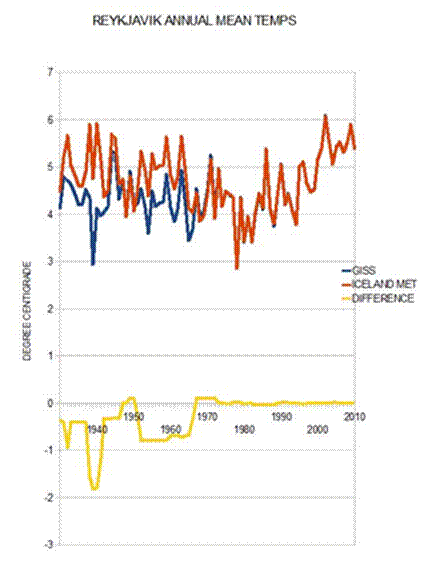
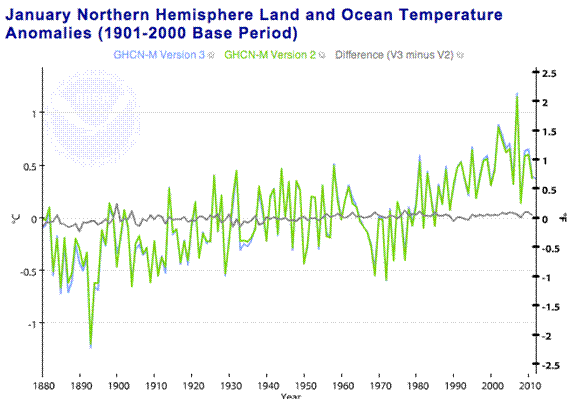
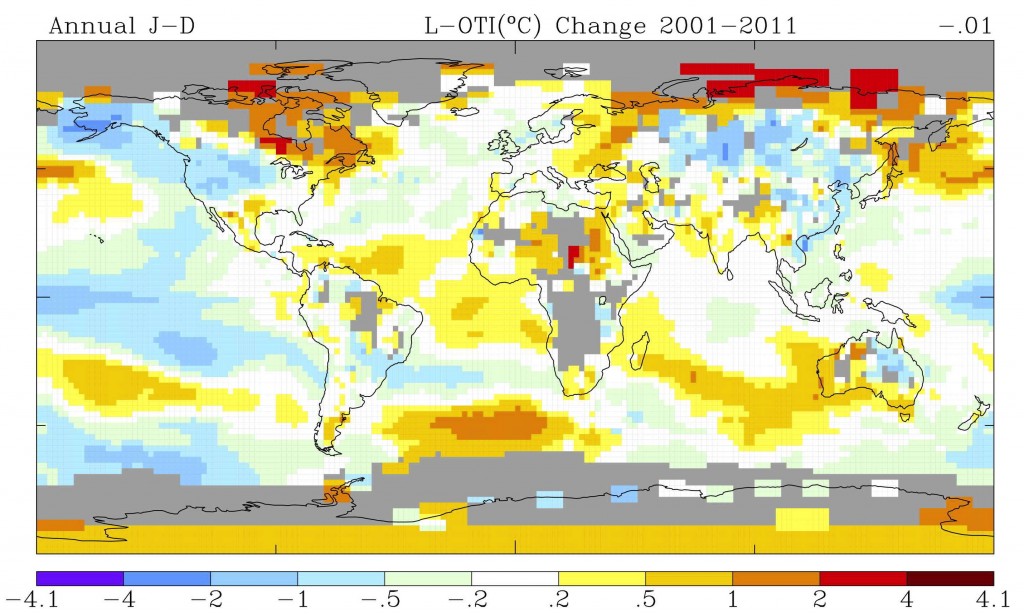


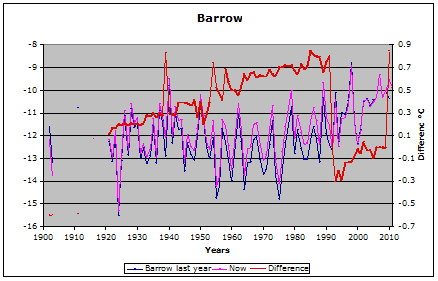
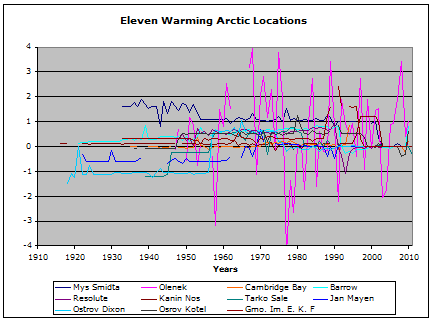
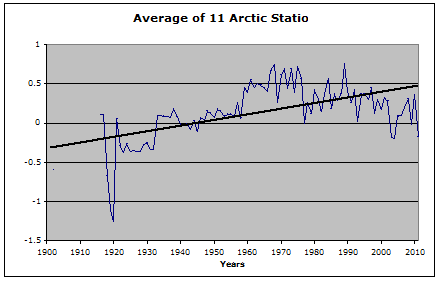
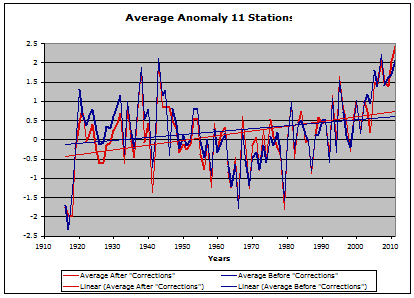
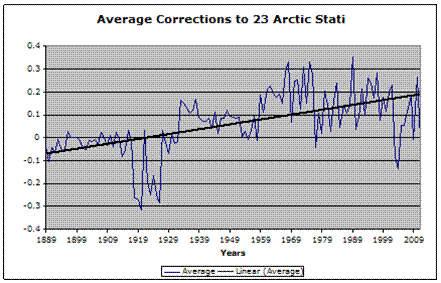





 Jim Hansen and his twin
Jim Hansen and his twin


No comments:
Post a Comment